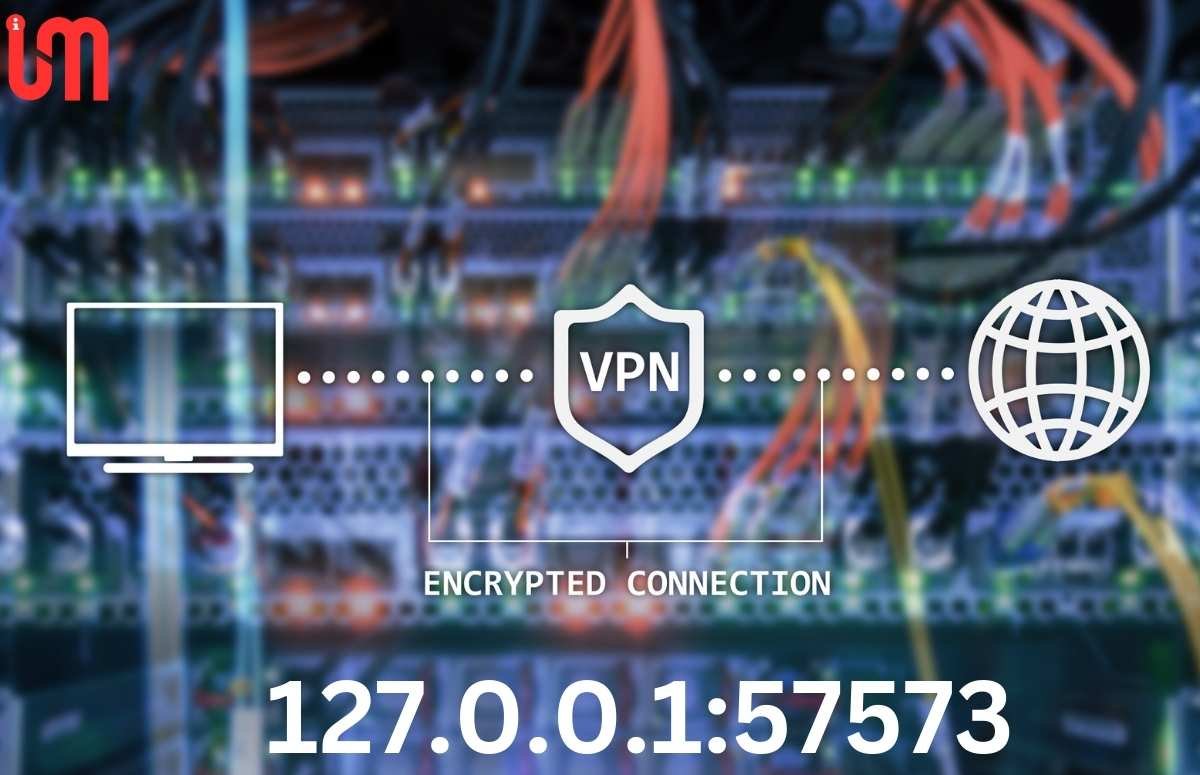While discussing the process of web development and testing, most developers come across errors that are associated with localhost connections. One error quite commonly occurs and is identified with the name “127.0.0.1:57573.” This kind of an error usually takes place when trying to connect to a local server and produces a message that “can not connect to host 127.0.0.1 on port 57573 after 45000ms.”
Understanding and solving it is very important for smooth progression and testing. In this article, we will discuss what 127.0.0.1:57573 means, common causes of errors, troubleshooting steps, and how it works with real examples in real-life applications.
What does 127.0.0.1:57573 mean?
IP address 127.0.0.1- the default loopback address for localhost-a virtual address that allows your computer to talk to itself. Port 57573 refers specifically to a specific port on this address for use in setting up local connections. Developers often use 127.0.0.1:57573 for running apps or services locally without exposing them to external networks. Port 57573, or any port for that matter, plays a significant role in defining how applications interact within the network. If one does not have or specifies the port correctly and or when there is conflict, the connection fails that lead to these types of errors in questions above.
Common Reasons for Errors related to 127.0.0.1:57573
There are several causes for errors related to 127.0.0.1:57573. Among them are:
- Service is Not Running: The service setup on 57573 port is not running or has crashed.
- Port Conflicts: Perhaps some application or service is already running on 57573 ports. These conflicts might easily arise when others using the same computer have established a similar application. Even such ports as 80, which are conventionally used for HTTP protocol to service all web traffic, become problematic since they are likely to be occupied by websites.
- Firewall or Antivirus Blocking: One of these could be blocking the port access 57573 because the security program detected something suspicious and disables local connection(s).
- Incorrect Port Number: Typographical error or misconfigured port numbers can lead to connection failure
- Insufficient permissions: When the administrative privileges are insufficient, some files, services or directories become unreachable and results in connectivity error.
- Incorrect network configuration: A misplaced network setting or one that is in conflict with another proxy setting will prevent localhost from making a connection.
Troubleshooting Steps for 127.0.0.1:57573 Errors
After finding the root cause, steps are taken to correct the error at 127.0.0.1:57573. Some common problems with their solution have been mentioned below in step-by-step troubleshooting procedure.
1. Check whether the service is running or not
Perform a check for the application or the service, for which you are trying to open using 127.0.0.1:57573. You can get this through opening the command prompt and executing the following command:
- arduino
- netstat -an | find “57573”
This will let you know if the port is being utilized. If not, then restart the service or application and try again
2. Unlock the Port in Your Firewall
Your antivirus software or firewall may be blocking access to port 57573. To check this out:
- Click on your firewall settings.
- Add an exception for port 57573 so the traffic can pass through.
- Disable your antivirus software temporarily and see if this causes the problem to disappear.
3. Verify the Application Configuration
Make sure your program uses port 57573. Check in config.yaml or app.config that the port is correctly set. Make sure no other service is trying to use the same port while it runs.
4. Investigate System Resources
Check your system for potential bottlenecks in resource allocation that may prevent your service from running or operating as it should. The Task Manager and Resource Monitor will keep tabs on CPU usage, memory, and network usage. Update your system’s hardware if necessary.
5. Reset Network Settings
Sometimes, network problems even result in real failures of localhost connections. It may be beneficial to reset your network stack – to do this in the command prompt (Admin):
Code: netsh int ip reset
Upon completion, restart your computer and test the problem again.
Use of 127.0.0.1:57573 in Development
It is often used in development environments when there are a lot of running local tests for applications and mainly these ones that have been listed below:
- Testing Web Applications Locally: Developers test frontend and backend by running the web application locally at 127.0.0.1:57573. Such is to ensure that everything runs just perfectly in a local environment before being introduced into a production environment.
- Developing and Testing API: By the presence of the loopback address, one can make API endpoints easily testable locally. In fact, with some sufficient integration of the APIs with services, one could eliminate bugs much more promptly without letting the external conditions get into the local environment.
- Microservices Architecture: In the architecture of microservices, it often happens that the different services are running on different ports. Developers can make use of 127.0.0.1:57573 to test and run a particular microservice without having conflicts with other services.
Common Types of 127.0.0.1 Errors
127.0.0.1 errors can be associated with different types of ports- all with different problems. A few common examples would include
- 127.0.0.1:8080:- This is one of the common web server ports. The error is caused because it is due to a port conflict or server misconfiguration.
- 127.0.0.1:3306: Common cause of this port is an issue with wrong database login credentials and server configurations.
- 127.0.0.1:49342: The common cause of problems in this port includes issues with the firewall and process conflict.
- 127.0.0.1:7860: The main associated issue in this port is resource allocation conflict
Real-life Example
Suppose we have a web application that consists of several components: a web server, a database, and an API service. Their API service has been set up on the loopback address 127.0.0.1:57573, along with the web server running on 127.0.0.1:8080 and the database running on 127.0.0.1:3306. The team puts all the components together in a local environment; they develop the API service on port 57573. This enables them to separate and test each one of the components, discover bugs, and optimize the system prior to deployment. An application developed this way eventually ends up as stronger and more reliable.
Conclusion
Understanding an error in relation to 127.0.0.1:57573 is really important for developers who work within local environments. Correctly configured and followed troubleshooting steps can include verifying services, firewall settings, port conflicts, among others. It is such an approach that could make workflows much smoother and more effective for collaboration and, on the whole, a high performance-establishing application.
FAQs
Ans: The error typically arises due to a service not running, port conflicts, firewall issues, or incorrect configurations in the system or application setup.
Ans: Fixes include checking if the service is running, ensuring the port isn’t in use by another application, and adjusting firewall or security settings that might be blocking the connection.
Ans: It’s primarily used for local development and testing of web applications, allowing developers to simulate real environments while isolating potential issues before live deployment.
Ans: Common causes include another application using the same port, security software blocking the port, or incorrect configurations in the network or application settings.
Also Read About:




